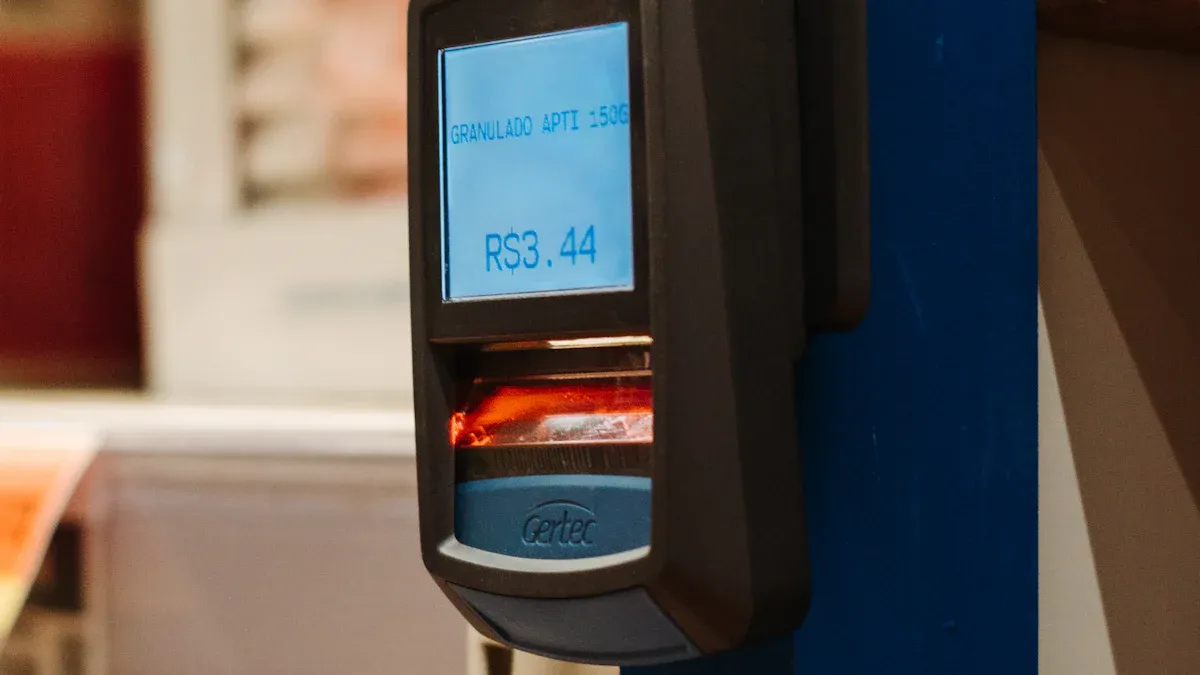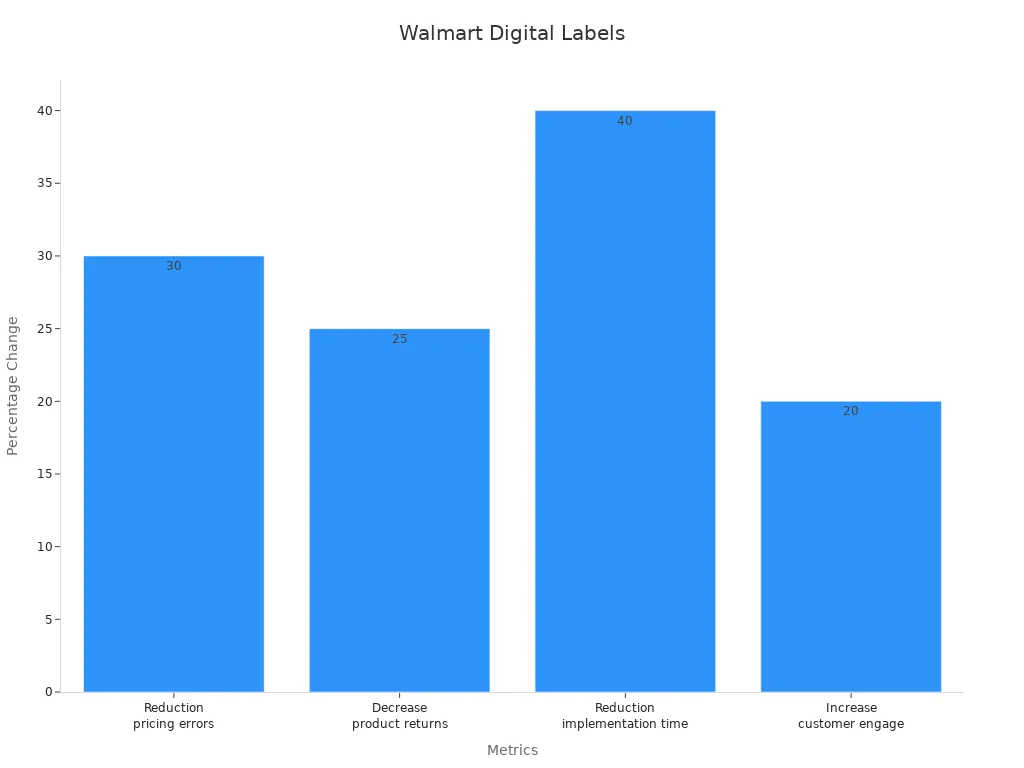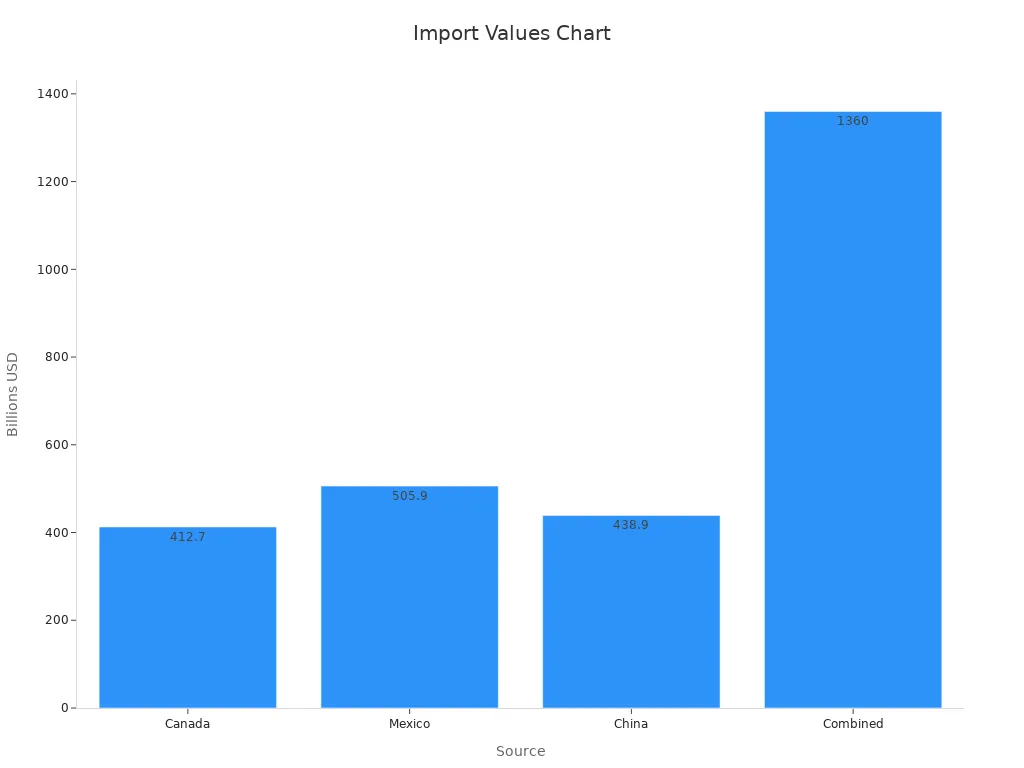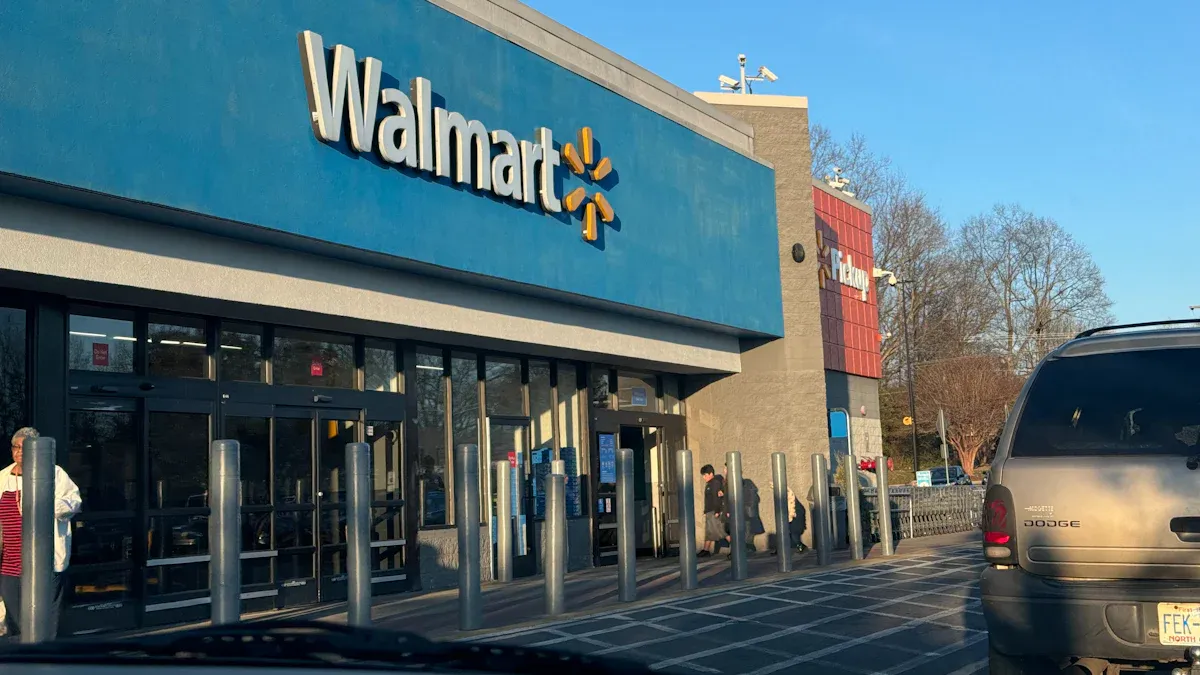
You can purchase the digital price tags used by Walmart, including Electronic Shelf Labels and models like the ESL Price Tag, through leading suppliers such as Vusion Group and Pricer. These tags connect wirelessly to an ESL Gateway AP and support real-time price updates. In Esl Retail, over 35% of retailers now use advanced pricing tools, with the market growing at 16.4% CAGR. Suppliers require business credentials, often verified through secure digital identity solutions, before you place an order. Walmart’s adoption of these tags shows how digital price tags can boost both revenue and efficiency.
What Are Walmart’s Digital Price Tags?

Technology Overview
Electronic Shelf Labels (ESLs)
You encounter electronic shelf labels every time you shop at Walmart. These digital labels replace traditional paper tags and display product prices, promotions, and essential information. Each tag uses e-ink or LCD technology, which ensures clear visibility and low power consumption. You benefit from real-time updates, as store associates can change prices across thousands of products instantly from a central system. In a typical Walmart store, over 120,000 products now use these digital labels, which cost between $5 and $20 each. This investment pays off quickly, as digital price technology reduces the time for price changes from two days to just a few minutes.
Wireless Communication and Display Features
You will notice that digital labels at Walmart connect wirelessly to a central gateway. This wireless system enables instant price updates and dynamic pricing strategies. The tags integrate with inventory systems, allowing you to see real-time stock levels and receive alerts for low inventory. Some digital labels even feature color-coded lighting to highlight promotions or indicate products eligible for government benefits. Integration with services like Instacart’s Pick to Light helps shoppers and staff locate items faster. These features set Walmart’s digital price tags apart from traditional paper labels.
Brands Used by Walmart
Vusion Group (SES-imagotag)
You find that Walmart relies heavily on Vusion Group, formerly SES-imagotag, for its electronic shelf labels. This brand leads the industry in wireless communication, display clarity, and integration with retail management systems. Vusion Group’s solutions support large-scale deployments, making them ideal for Walmart’s extensive product range.
Pricer
Pricer also supplies digital labels to Walmart. You benefit from Pricer’s robust wireless technology and reliable performance. Their labels offer fast updates and seamless integration with store operations, supporting Walmart’s need for efficiency and accuracy.
Other Industry Leaders (e.g., E Ink, Displaydata)
You may encounter other brands like E Ink and Displaydata in the digital price tag market. These companies provide advanced display technologies and integration options. While Walmart primarily uses Vusion Group and Pricer, these industry leaders contribute to the ongoing innovation in digital price technology.
Why Retailers Use Digital Price Tags
Benefits for Large-Scale Retail
You see major retailers like Walmart adopting digital labels for several reasons:
- Reduced labor costs: Employees no longer spend two days changing paper tags for 120,000 items. Digital labels cut this task to minutes.
- Improved accuracy: Digital price technology reduces pricing errors by 30%, as reported by the National Retail Federation.
- Enhanced customer experience: Features like QR codes for recipes and nutrition facts engage shoppers and provide valuable information.
- Environmental savings: Digital labels eliminate the need for paper and ink, supporting sustainability goals.
| Metric | Result | Source/Context |
|---|---|---|
| Reduction in pricing errors | 30% decrease | NRF report on Walmart’s switch to digital labels |
| Decrease in product return rates | 25% decrease | McKinsey study |
| Increase in customer engagement | 20% increase | Retail Dive report |
| Technology features | Low power, wireless, integration | Operational reliability |
Real-Time Price Updates
You benefit from real-time price updates with Walmart’s digital labels. Store associates can remotely update prices for every product in minutes, ensuring accuracy and consistency. This capability supports dynamic pricing, allowing Walmart to respond quickly to market changes and promotions. The system also improves online order preparation and stock replenishment through features like Pick to Light.

Note: Research shows that digital labels not only improve operational efficiency but also increase customer engagement by 20%.
Where to Buy Walmart’s Digital Price Tags
Official Manufacturers and Suppliers
Vusion Group (SES-imagotag) Direct Sales
You can approach Vusion Group, formerly SES-imagotag, if you want the same digital price tags used by Walmart. Vusion Group operates a global sales network and works directly with enterprise clients. You will need to submit a business inquiry through their official website or contact their sales team by email. Vusion Group typically requires you to provide business credentials and details about your store infrastructure. You may also need to meet minimum order quantities. When you buy directly, you gain access to the latest models, full technical support, and integration services tailored for large-scale deployments.
Pricer Official Channels
Pricer stands as another primary supplier for Walmart’s digital labels. You can reach out to Pricer through their official website or regional offices. Pricer’s team will guide you through the selection process, help you assess your store’s needs, and provide quotes based on your requirements. You will need to verify your business status and discuss installation options. Pricer offers robust after-sales support and ensures compatibility with your existing systems.
Displaydata and E Ink Manufacturer Contacts
Displaydata and E Ink supply advanced digital labels to retailers worldwide. You can contact these manufacturers directly for product catalogs and pricing. Displaydata specializes in high-resolution displays, while E Ink provides the core technology behind many digital price tags. Both companies expect you to provide business verification and project details. Direct engagement with these manufacturers often results in better customization and integration support.
Authorized Distributors and Resellers
Regional Distributors
You may find regional distributors who specialize in retail technology solutions. These distributors partner with manufacturers like Vusion Group and Pricer to supply digital labels to local markets. You can benefit from localized support, faster delivery times, and assistance with installation. Regional distributors often help you navigate import regulations and provide training for your staff.
Online B2B Marketplaces (e.g., Alibaba, ThomasNet)
You can explore online B2B marketplaces such as Alibaba and ThomasNet to source Walmart-style digital price tags. These platforms connect you with verified suppliers and offer a wide range of models. You can compare prices, request samples, and negotiate terms directly with sellers. However, you should always verify supplier credentials and check for warranty coverage before making a purchase.
Specialized Retail Technology Vendors
Specialized retail technology vendors focus on digital labels and related solutions. You can find these vendors through industry trade shows, online directories, or referrals from other retailers. These companies often provide end-to-end services, including installation, software integration, and ongoing support. Working with a specialized vendor can simplify the purchasing process and ensure that your tags meet your store’s unique requirements.
Buying Direct vs. Through Third Parties
Pros and Cons of Direct Purchase
When you buy digital price tags directly from manufacturers, you gain several advantages. You receive the latest product versions, full technical support, and better integration with your store systems. Direct purchases often come with stronger warranty terms and access to bulk pricing. However, you may face higher minimum order quantities and longer lead times.
Pros and Cons of Using Distributors
Purchasing through authorized distributors or resellers offers flexibility. You can order smaller quantities and benefit from local support. Distributors may provide faster shipping and help you with installation. On the downside, you might pay higher per-unit costs and have limited access to the newest models. Warranty coverage and technical support may also vary depending on the distributor’s agreements with manufacturers.
| Purchase Channel | Typical Cost Efficiency | Support Level | Access to Latest Models | Minimum Order Quantity | Customization Options |
|---|---|---|---|---|---|
| Direct Manufacturer | High | Full manufacturer | Yes | High | Extensive |
| Authorized Distributor | Moderate | Localized/Distributor | Sometimes | Lower | Moderate |
| Online Marketplace | Variable | Limited | Sometimes | Low | Limited |
Tip: Buying directly from manufacturers often yields better cost efficiency and support, especially for large-scale projects like Walmart’s. Field studies show that first-party data targeting, similar to direct purchases, delivers higher performance and efficiency compared to third-party segments.
A recent field test compared the effectiveness of direct and third-party data purchases in a digital publisher network. The study used cookie syncing and surveywall technology to measure audience reach and cost efficiency. Results showed that first-party demographic and content-interest targeting outperformed third-party probabilistic and deterministic segments. This finding suggests that buying digital price tags directly from manufacturers can provide better value and performance than relying on third-party distributors.
How to Initiate a Purchase
You should start by researching potential suppliers and gathering quotes. Contact the manufacturer or distributor through their official channels. Prepare your business credentials and project details. Ask about minimum order quantities, pricing, and support options. Once you select a supplier, negotiate terms, finalize your order, and arrange for delivery and installation. Always verify the supplier’s credentials and review warranty terms before completing your purchase.
What to Know Before You Buy Digital Price Tags
Minimum Order Quantities and Pricing
Typical MOQ Requirements
When you approach suppliers for digital price tags, you often encounter minimum order quantity (MOQ) requirements. Manufacturers like Vusion Group and Pricer usually set MOQs to ensure cost-effective production and shipping. For enterprise-grade digital labels, you may need to order several hundred units at a minimum. Smaller distributors or specialized vendors sometimes offer lower MOQs, which can help if you plan a pilot program or operate a smaller store.
Price Ranges and Cost Factors
The price of digital price tags varies based on display size, technology, and features. Most digital labels cost between $5 and $20 per unit. Factors such as wireless connectivity, battery life, and display type (e-ink or LCD) influence the final price. Additional costs may include gateways, software licenses, and installation services. Bulk orders often qualify for discounts, so you should negotiate with suppliers to maximize value.
Compatibility and Installation Requirements
Store Infrastructure Needs
Before you invest in digital price tags, you must assess your store’s infrastructure. Digital labels require a reliable wireless network and integration with your point-of-sale (POS) system. Unlike traditional tags, these systems depend on robust IT capabilities. You need to evaluate your current network, power sources, and shelving types. Different mounting methods—such as clip-on, magnetic, or rail systems—may be necessary depending on your store layout. Early planning and collaboration with your vendor help you avoid technical challenges during deployment.
- Digital price tags rely on stable Wi-Fi or Bluetooth networks for real-time updates.
- Integration with POS and inventory systems ensures accurate pricing and stock data.
- Battery-powered, hardwired, or solar-powered options exist, each with unique maintenance needs.
Software and Integration Considerations
Seamless integration with your retail management software is critical. Digital price tags must communicate with your POS, inventory, and promotional systems to maintain accurate data. Middleware often acts as a translator between digital labels and your existing software, handling different protocols and data formats. You may need to develop custom connectors or APIs, especially if you use legacy systems. Testing with sample tags and pilot programs helps you identify and resolve issues before full deployment. Reliable network infrastructure supports thousands of labels and enables advanced features like dynamic pricing and real-time inventory visibility.
Support and Warranty Considerations
Service Agreements
You should review service agreements before finalizing your purchase. These agreements outline the level of technical support, software updates, and staff training provided by the supplier. Ongoing support ensures your digital price tags operate smoothly and adapt to future technology changes.
Warranty Coverage
Warranty terms vary by manufacturer and distributor. Most suppliers offer coverage for hardware defects and battery performance. You should confirm the warranty period and understand what is included, such as replacement policies and response times for technical issues. Clear warranty coverage protects your investment and minimizes downtime.
The Purchasing Process for Walmart Digital Price Tags
Research and Contact Suppliers
Gathering Quotes
You start your purchasing journey by researching potential suppliers. Begin by identifying manufacturers and authorized distributors that offer digital price tags compatible with your store’s needs. Request detailed quotes from each supplier. These quotes should include unit pricing, minimum order quantities, lead times, and available support services.
A structured approach to supplier research ensures you make informed decisions. Many organizations extract supplier data from systems like ERP and contract management platforms. They then clean and integrate this data into a central database. This process gives you access to reliable, up-to-date supplier information, which supports effective sourcing and supplier selection. By using this method, you can compare offers beyond just price, considering factors like service quality and integration capabilities.
Tip: Standardizing your purchasing process and using data analytics helps you monitor supplier performance and track key metrics such as procurement cycle time and on-time delivery rates.
Verifying Supplier Credentials
Before you proceed, verify each supplier’s credentials. Check for manufacturer authorization, business licenses, and industry certifications. Reliable suppliers provide documentation on product authenticity and warranty coverage. You should also review their track record for on-time delivery and after-sales support.
A shared data environment within your organization allows both operational and strategic teams to evaluate suppliers consistently. Regular communication and standardized supplier management practices help you build strong relationships and ensure compliance with your purchasing standards.
Placing an Order
Negotiating Terms
Once you select a supplier, negotiate the terms of your purchase. Discuss pricing, payment schedules, delivery timelines, and support agreements. Suppliers may offer discounts for bulk orders or long-term partnerships. Clear communication during negotiation helps you secure favorable terms and avoid misunderstandings.
Payment and Delivery Options
You benefit from suppliers that offer a variety of payment methods, such as credit card, wire transfer, or third-party payment platforms. Clear presentation of these options reduces confusion and streamlines the checkout process. Most suppliers use interfaces that highlight the default payment method and allow you to choose your preferred option easily.
In digital price tag transactions, many suppliers use a Delivery Versus Payment (DVP) system. This method ensures that you receive your products only when payment is made, reducing the risk of non-delivery or payment issues. DVP safeguards your transaction by linking payment and delivery, providing peace of mind throughout the process.
Installation and Setup
Professional vs. DIY Installation
After your order arrives, you must decide between professional installation and a do-it-yourself approach. Professional installation teams handle network setup, label mounting, and system integration. This option ensures optimal performance and minimizes disruption to your operations. If you have in-house technical expertise, you may choose DIY installation, which can save costs but requires careful planning and training.
Training and Support
Comprehensive training prepares your staff to manage and maintain the digital price tag system. Many suppliers offer onboarding sessions, user manuals, and ongoing technical support. Reliable support services help you resolve issues quickly and keep your pricing system running smoothly.
Note: Investing in training and support ensures your team can fully leverage the benefits of digital price tags, from real-time updates to advanced inventory management.
Challenges and Considerations When Buying Digital Price Tags
Business Verification and Eligibility
Requirements for B2B Purchases
You must meet strict business verification standards when purchasing digital price tags from official suppliers. Most manufacturers and distributors require you to prove your business status before processing your order. This process helps prevent unauthorized sales and ensures compliance with industry regulations. You often need to demonstrate that your business operates in retail, technology, or a related sector. Suppliers may also evaluate your purchasing history, store size, and intended use of the tags.
Documentation Needed
To verify eligibility, you should prepare several documents. Suppliers typically request business licenses, tax identification numbers, and proof of business address. For larger or federally funded purchases, you may need to complete a sole source justification form. This form explains why you selected a specific supplier and includes market research results, a list of all suppliers contacted, and reasons for exclusion. Procurement staff review your documentation to ensure compliance with state and federal rules. You should also gather commodity profiles, cost structures, and quality evaluations to support your decision.
Tip: Thorough documentation and market research help you avoid delays and ensure a smooth procurement process for your digital price tags.
Import/Export and Shipping Issues
International Orders
When you source digital price tags internationally, you face several challenges. Tariffs and import regulations can significantly increase your costs. For example, a 25% tariff applies to imports from Canada and Mexico, while a 10% tariff affects imports from China. These additional costs impact your procurement strategy and may influence your choice of supplier.
| Statistic / Fact | Description / Impact |
|---|---|
| 25% tariff on imports from Canada and Mexico; 10% tariff on imports from China | Significant additional costs imposed on ecommerce imports, including digital price tags sourced internationally |
| $412.7B imports from Canada, $505.9B from Mexico, $438.9B from China in 2024 | Shows scale of goods affected by tariffs, indicating broad impact on ecommerce supply chains |
| Combined $1.36 trillion imports from these countries | Highlights the large volume of goods subject to tariffs, affecting pricing and procurement decisions |
| Tariffs lead retailers to raise prices to maintain margins | Direct effect on consumer prices and procurement costs for ecommerce businesses |
| De minimis rule allows imports up to $800 without formal customs declarations | Many ecommerce merchants (e.g., Shein, Temu) rely on this to reduce tariff impact, but enforcement changes threaten this advantage |
| Small businesses more affected by tariffs than large retailers | Smaller merchants face higher relative cost increases, influencing their sourcing and pricing strategies |

You can use analytics and ERP tools to simulate tariff impacts on your product pricing. Many retailers adjust prices transparently and communicate tariff-driven increases to customers. You may also mitigate tariff effects by securing local inventory or exploring new suppliers.
Customs and Duties
Customs clearance adds another layer of complexity. You must prepare accurate shipping documents and understand the de minimis rule, which allows imports up to $800 without formal customs declarations. However, changes in enforcement can affect your procurement strategy. Small businesses often feel the impact of customs duties more than large retailers, so you should plan for possible shipping delays or stock shortages.
Ongoing Maintenance
Battery Replacement
Digital price tags require ongoing maintenance to ensure reliable performance. Most tags use coin-cell batteries, such as CR2450 or CR2430. E-paper displays consume minimal power, allowing batteries to last five to ten years with minimal updates. However, frequent price changes can reduce battery life to three to six years. You should monitor battery condition and schedule replacements to avoid disruptions.
| Factor | Detail |
|---|---|
| Battery type | Coin-cell (CR2450, CR2430) |
| Update frequency impact | Frequent updates: 3-6 years |
| Minimal updates: up to 10 years | |
| Example product (HS290) | 2 CR2430 batteries, 5-year lifespan with 2-3 updates/day |
| Power management | BLE 5.0 low-power transmission |
| Maintenance recommendations | Manage update frequency, monitor condition, schedule battery replacement |
Software Updates
You must also manage software updates for your digital price tag system. Regular updates improve security, add features, and ensure compatibility with your retail management software. Many suppliers provide ongoing support and training to help you implement updates smoothly. By maintaining both hardware and software, you maximize the return on your investment in digital price tags.
Note: Digital price tags reduce manual labor and operational costs, but you must plan for battery and software maintenance to sustain long-term benefits.
Alternatives to Walmart’s Digital Price Tags

Similar Products for Small Businesses
Lower-Cost ESL Brands (e.g., MUNBYN, SOLUM)
You do not need to operate a large retail chain to benefit from digital price tags. Brands like MUNBYN and SOLUM offer electronic shelf label (ESL) solutions designed for small businesses. These brands provide reliable e-ink or LCD tags at a lower price point. You can find models that support wireless updates, barcode displays, and even basic inventory integration. MUNBYN and SOLUM focus on affordability and ease of use, making them suitable for independent stores, pop-up shops, and specialty retailers.
Plug-and-Play Solutions
You can choose plug-and-play digital price tag kits if you want a simple setup. These solutions include pre-configured tags, a wireless gateway, and user-friendly software. You do not need advanced IT skills to install or manage these systems. Plug-and-play kits work well for small stores, market stalls, or temporary retail events. You can quickly update prices and product information from a tablet or computer, saving time and reducing manual errors.
Market research shows that digital shelf-edge displays now replace traditional paper labels in many retail settings. These digital tags reduce manual labor and enable dynamic pricing, which supports their use in small-scale and alternative retail formats.
Where to Buy Alternatives
Amazon and Online Retailers
You can purchase alternative digital price tags from major online platforms. Amazon, eBay, and other e-commerce sites list a variety of ESL kits and accessories. You can compare features, prices, and shipping options before making a decision. Many online retailers offer starter packs with a small number of tags, which helps you test the technology before a larger rollout.
Local Technology Suppliers
You may also find digital price tag solutions through local technology vendors. These suppliers often provide personalized service, on-site demonstrations, and technical support. Working with a local provider can simplify installation and troubleshooting. You can visit their showroom or request a consultation to see which products fit your store’s needs.
Pros and Cons of Alternative Solutions
Feature Comparison
| Feature | Lower-Cost ESL Brands | Plug-and-Play Kits | Enterprise Solutions |
|---|---|---|---|
| Price | Low | Moderate | High |
| Installation | Simple | Easiest | Complex |
| Integration | Basic | Basic | Advanced |
| Scalability | Limited | Moderate | Extensive |
| Support | Varies | Vendor/Online | Full Service |
You gain basic wireless updates and inventory features with lower-cost brands. Plug-and-play kits offer the fastest setup but may lack advanced integration. Enterprise solutions provide full customization and scalability, but at a higher cost.
Cost and Scalability
- Digital price tag solutions scale with your business. You can start with a small pilot and expand as needed.
- Costs depend on deployment size. Small projects may range from $50,000 to $100,000, while larger rollouts cost more.
- Using your existing IT systems and infrastructure helps reduce initial expenses.
- Ongoing support, software updates, and training are important for long-term savings.
- You should plan for hidden costs, such as data migration and downtime during setup.
The 2025 Square Future of Retail report shows that 93% of retailers now use automation in at least one area, including inventory management. This trend highlights the growing demand for digital price tags, especially in small and alternative retail formats. Starting with scalable, cost-effective solutions helps you maximize your return on investment as your business grows.
Tips for a Successful Digital Price Tag Purchase
How to Choose the Right Supplier
Reputation and Reviews
You should always prioritize supplier reputation when selecting digital price tag vendors. Industry experts use several benchmarks to assess supplier reliability and performance:
- Quality assurance: Suppliers must deliver products that meet all specifications and comply with industry standards. This helps you avoid regulatory fines and protect your brand.
- Reputation management: Avoid suppliers with histories of unethical practices, human rights violations, or environmental controversies. This protects your business from reputational harm.
- Risk profiling: Evaluate each supplier’s operational capacity, financial health, and geographic stability. Consider risks such as natural disasters or political unrest.
- Regular audits and inspections: Conduct ongoing checks to ensure suppliers maintain agreed standards.
- Supplier performance metrics: Monitor on-time delivery rates and product quality.
- Diversification: Work with multiple suppliers to reduce dependency and mitigate risk.
- Third-party assessments: Use independent evaluations to confirm compliance with quality, environmental, and ethical standards.
Tip: Integrate supplier metrics into your supply chain scorecards. This helps you automate and standardize performance evaluation, focusing on metrics that impact customer satisfaction and inventory management.
After-Sales Support
You need robust after-sales support to ensure long-term success with digital price tags. Reliable suppliers offer technical assistance, warranty services, and regular software updates. You should confirm the availability of training resources and responsive customer service. Strong after-sales support minimizes downtime and helps your team resolve issues quickly.
Maximizing Value
Negotiating Bulk Discounts
You can often secure better pricing by negotiating bulk discounts. Data from a large U.S. retailer shows that 77% of orders included negotiated discounts, with an average discount of 3% per order. Most bulk purchases involved multiple products, with an average order size of $1,938 and six items per order. Suppliers may not always advertise quantity discounts, but negotiation remains common practice.
| Metric | Value | Notes |
|---|---|---|
| Orders with multiple products | 76% | 40% with 2-5, 36% with 6+ products |
| Orders with negotiated discounts | 77% | Discounts often applied in bulk orders |
| Average negotiated discount | 3% ($11) | Varies by product group |
| Average order size | $1,938 | Reflects substantial purchase volume |
| Average number of products per order | 6 (4 unique) | Multi-product purchasing behavior |
Tip: Prepare your order details and reference advertised prices when negotiating. Suppliers often respond favorably to well-documented requests for discounts on larger orders.
Leveraging Supplier Relationships
You gain significant advantages by building long-term relationships with your suppliers. Over 75% of procurement leaders highlight the importance of close partnerships in strategic industries. Strong supplier relationships lead to:
- Reduced costs through mutual cooperation and lower setup expenses.
- Increased efficiency from improved communication and understanding.
- Minimized price volatility with fixed or scaled pricing in longer contracts.
- Streamlined purchasing and budgeting by consolidating your supply chain.
- Continual operational improvement through ongoing feedback and joint development.
Automation and e-procurement tools further enhance collaboration, keeping suppliers informed and reducing manual follow-ups. Treating suppliers as partners, not just vendors, positions you as a customer-of-choice. This approach leads to better service, higher engagement, and improved compliance.
Note: Successful organizations recognize that their own success depends on their suppliers’ success. Investing in these relationships pays off with better pricing, service, and innovation over time.
You can secure the same digital price tags used by Walmart by working with Vusion Group or authorized distributors. Always check minimum order requirements, verify supplier credentials, and plan for installation and support. Contact suppliers directly for quotes and guidance. If you cannot access official Walmart solutions, explore alternative brands. The table below summarizes key insights about Walmart’s digital price tag adoption:
| Aspect | Statistic / Insight |
|---|---|
| Positive consumer impact | 14% of U.S. adults believe digital price tags will positively impact their shopping experience |
| Negative consumer impact | 40% of U.S. adults view digital price tags negatively |
| Employee time savings | Digital price tags save employees time, allowing focus on customer service |
| Consumer optimism by age group | Gen Z and Millennials more optimistic; majority 55+ are negative |
FAQ
How do you verify if a supplier is authorized to sell Walmart’s digital price tags?
You should check the supplier’s official partnership status on the manufacturer’s website. Request documentation, such as authorization letters or certificates. Reliable suppliers provide clear proof of their relationship with Vusion Group, Pricer, or other leading brands.
What is the typical lead time for digital price tag orders?
Lead times vary by supplier and order size. Most manufacturers require four to eight weeks for delivery. Distributors may offer faster shipping for smaller quantities. Always confirm timelines before placing your order.
Can you install digital price tags yourself?
You can install digital price tags if you have basic technical skills. Many suppliers provide installation guides and training. For large-scale deployments, professional installation ensures optimal performance and system integration.
Do digital price tags work with any POS system?
Most digital price tags require integration with compatible POS and inventory systems. You should confirm software compatibility with your supplier. Some solutions offer middleware or APIs for easier integration.
What happens if a digital price tag malfunctions?
You should contact your supplier’s support team. Most manufacturers offer warranty coverage for hardware defects. Suppliers may provide troubleshooting guides, replacement units, or on-site service, depending on your agreement.
Are there ongoing costs after the initial purchase?
Yes, you may incur costs for software licenses, battery replacements, and support services. Some suppliers include updates and maintenance in service agreements. Review all terms before finalizing your purchase.


